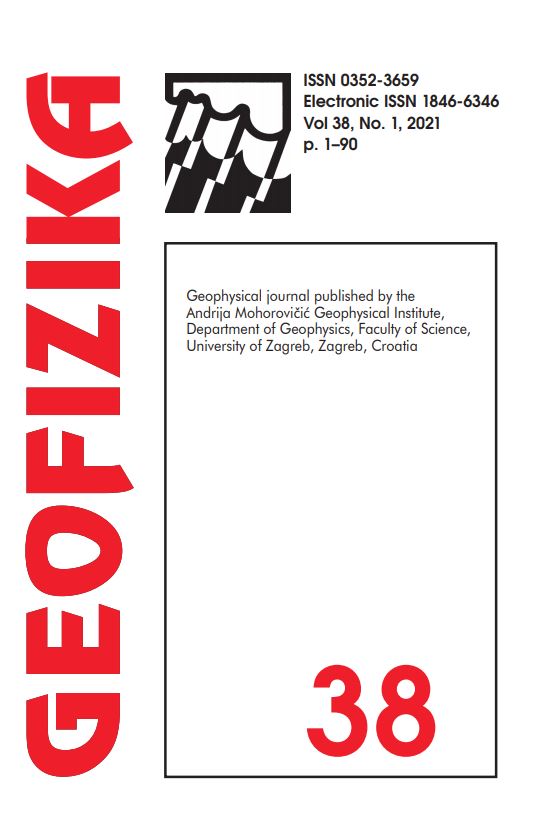The assessment of local site effects and dynamic behaviour in Nicosia, Cyprus
DOI:
https://doi.org/10.15233/gfz.2021.38.1Keywords:
microtremor, Re-Mi, L-Spac, MASW, local site effectsAbstract
Single-station microtremor measurements were conducted to investigate earthquake and soil behaviour for the first time in Nicosia, Cyprus. Cyprus is located in a tectonically complex area in the Eastern Mediterranean where three plates meet. The study area was chosen to cover the areas to be opened for new development. Nicosia, the capital of Cyprus, is also the island's most important cultural, industrial, commercial, and transportation centre. The study creates base maps for the soil to assess earthquake resistance crucial for construction. Microtremor Method was applied at 100 stations and the Multi-Channel Analysis of Surface Waves (MASW) method was used at 52 stations. Also, RefractionMicrotremor (Re-Mi) and L-Shaped Spatial Autocorrelation (L-SPAC) methods were carried out at 17 stations to substantiate the research. The results of the microtremor method indicate that the predominant soil period values have an average of 1 second and pre-dominant peak period values are generally found between 0.1 to 5 s at the study area. Peak amplitude values are observed between 1 and 2.4. The Vulnerability Index Parameter (Kg) exceeded 20 at the central and the southern stations, and Kg values change between 7 and 54 units. The Kg values were found to be higher than 20 in soils where shear wave velocity is lower than 760 m/s. At the same time, the values of the predominant peak period were greater than 1 second. Cyprus is located in the Alpine Himalayan earthquake zone. The Cyprus Arc is known as the main seismic source of the island, It constitutes the tectonic border among African and Eurasian lithospheric plates in the region. During an earthquake in Nicosia, seismic waves will be amplified by an average of 1.5 times and soil deformation will occur due to the exceeding elastic limits. The results provided important insight into soil behaviour and indicated its reactions in a potential earthquake.
Downloads
Published
Issue
Section
License
Copyright (c) 2021 Geofizika Journal

This work is licensed under a Creative Commons Attribution-NonCommercial 4.0 International License.

